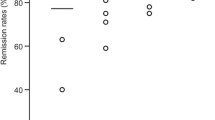Abstract
Among the fathers of transsphenoidal surgery, a relevant role should be reserved for Cesare Cavina (1888–1935). He had the merit to develop and popularize in Italy this approach for pituitary tumors, performing 47 transsphenoidal hypophysectomies out of his personal series of 66 patients between 1927 and 1935. He contributed to this surgery by introducing radiological control of the surgical trajectory to reduce the risk of complications and increase the safety of this approach. We think that both his short lifespan (he died when he was 47 years old) and the language of his papers (Italian and not English) are two important factors that have contributed to forgetting his role in the history of transsphenoidal surgery. We think that Prof. Cesare Cavina is definitively one of the fathers of transsphenoidal surgery and that it is important to preserve his memory.







Similar content being viewed by others
References
Cavina C (1931) [The utility of radiographic control in transsphenoidal pituitary surgery, in order to detect the exact location of sphenoidal sella drilling] [Article in Italian]. Rivista Radio logia fisica Medica 5:12–20
Cavina C (1933) [Tumors of diencephalic region] [book in Italian]. Milan, Italy: Società Editrice Libraria
Cavina C (1930) [Considerations about radiological findings, radiotherapy and pituitary surgery, basing on the experience of 12 hypophysectomies] [book in Italian]. Modena, Italy: Tip. Immacolata Concezione
Cavina C (1931) [Early and late results in 14 hypophysectomies for endosellare tumors] [book in Italian]. Società Tip. A. Manuzio, Rome
Cavina C (1931) [Technique and results of 14 hypophyseactomies for endosellar tumors] [book in Italian]. Tip. A. Cordani, Milan
Cavina C (1930) [Ten surgeries in 9 patients. Technical note and results] [art. in Italian]. Bullet Tino Delle Sci Med 10(1):1–2
Cavina C (1931) [Actual state of pituitary surgery] [book in Italian]. Bologna, Italy, L. Cappelli Editore
Cavina G (1950) [In memoriam of Cesare Cavina in the 15th commemoration of the death] [Book in Italian]. Tip. B. Coppini & C, Firenze
Cavina G (1951) [Memory of Prof. Cesare Cavina, Bologna 1888–1935, in the 30th commemoration of the death] [Book in Italian]. Tip. B. Coppini & C, Firenze
Cavina G (1951) Activity of Prof. Cesare Cavina in the neurosurgical field] [art. in Italian. Acta Neurochir 2(1):1–3
Cavina G (1937) The contribution of Prof. Cesare Cavina to cerebral pituitary surgery] [art. in Italian. Arch Ital Chir 44(6):613–654
Cohen-Gadol AA, Liu JK, Laws ER Jr (2005) Cushing’s first case of transsphenoidal surgery: the launch of the pituitary surgery era. J Neurosurg 103(3):570–574
Jankowski R, Auque J, Simon C, Marchal JC, Hepner H, Wayoff M (1992) Endoscopic pituitary tumor surgery. Laryngoscope 102(2):198–202
Jho HD, Carrau RL (1997) Endoscopic endonasal transsphenoidal surgery: experience with 50 patients. J Neurosurg 87(1):44–51
Kanter AS, Dumont AS, Asthagiri AR, Oskouian RJ, Jane JA Jr, Laws ER Jr (2005) The transsphenoidal approach. A historical perspective. Neurosurg Focus 18(4):e6
Lanzino G, Laws ER Jr (2001) Pioneers in the development of transsphenoidal surgery: Theodor Kocher, Oskar Hirsch, and Norman Dott. J Neurosurg 95(6):1097–1103
Lanzino G, Laws ER Jr (2003) Key personalities in the development and popularization of the transsphenoidal approach to pituitary tumors: an historical overview. Neurosurg Clin N Am 14(1):1–10
Lindholm J (2007) A century of pituitary surgery: Schloffer’s legacy. Neurosurgery 61(4):865–867
Liu JK, Cohen-Gadol AA, Laws ER Jr, Cole CD, Kan P, Couldwell WT (2005) Harvey Cushing and Oskar Hirsch: early forefathers of modern transsphenoidal surgery. J Neurosurg 103(6):1096–1104
Liu JK, Das K, Weiss MH, Laws ER Jr, Couldwell WT (2001) The history and evolution of transsphenoidal surgery. J Neurosurg 95(6):1083–1096
Nigrisoli B (1936) [Cesare Cavina, 1888–1935] [art. in Italian]. Policlinico (Sezione Pratica) 14:1–3
Patel SK, Husain Q, Eloy JA, Couldwell WT, Liu JK (2012) Norman Dott, Gerard Guiot, and Jules Hardy: key players in the resurrection and preservation of transsphenoidal surgery. Neurosurg Focus 33(2):E6
Schmidt RF, Choudhry OJ, Takkellapati R, Eloy JA, Couldwell WT, Liu JK (2012) Hermann Schloffer and the origin of transsphenoidal pituitary surgery. Neurosurg Focus 33(2):E5
Conflict of interest
All authors certify that they have no affiliations with or involvement in any organization or entity with any financial interest (such as honoraria; educational grants; participation in speakers’ bureaus; membership, employment, consultancies, stock ownership, or other equity interest; and expert testimony or patent-licensing arrangements), or non-financial interest (such as personal or professional relationships, affiliations, knowledge or beliefs) in the subject matter or materials discussed in this manuscript.
The authors state that the content of the submitting manuscript, in part of in full, has not been published previously and has not been submitting elsewhere for review. There is no financial support received in conjunction with the generation of this submission and no conflict of interest. The authors certify that this manuscript is a unique submission and is not being considered for publication with any other source in any medium.
Author information
Authors and Affiliations
Corresponding author
Additional information
Comment
This is a simple and nice contribution of historical value about Cesare Cavina, an eclectic Italian surgeon of the first half of the last century, who significantly contributed to the development of transsphenoidal surgery, mainly in Bologna. We appreciate the work of our contemporary Bologna group, who can be considered among the most brilliant innovators in endoscopic transsphenoidal surgery with their seminal work on the endonasal approach to the cavernous sinus. No doubt Professor Cavina deserves this recognition and it is beautiful that it comes from visionary people as he was.
Paolo Cappabianca
Naples, Italy
Rights and permissions
About this article
Cite this article
Frank, G., Zoli, M., Mazzatenta, D. et al. Cesare Cavina (1888–1935): a father of transsphenoidal surgery. Acta Neurochir 157, 913–918 (2015). https://doi.org/10.1007/s00701-015-2418-4
Received:
Accepted:
Published:
Issue Date:
DOI: https://doi.org/10.1007/s00701-015-2418-4




